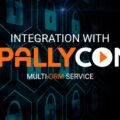With the rise of e-learning and online education, the protection of educational content has become a critical concern for educators and educational institutions. Video watermarking and DRM (Digital Rights Management) service are two techniques that have been employed to protect educational content from piracy and unauthorized access.
Video watermarking is the process of embedding a unique identifier into a video file that identifies its owner or copyright holder. This watermark can be visible or invisible, and it can help identify the source of a video if it is shared illegally. Watermarking can be an effective way to deter piracy and protect educational content from being copied or distributed without permission.
DRM service, on the other hand, refers to a set of technologies that are used to control access to digital content and protect its copyright. DRM can be used to limit access to educational content based on factors such as time, location, or device. It can also prevent users from copying or sharing the content with others. DRM service can be an effective way to protect educational content from unauthorized access and ensure that it is used appropriately.
The use of video watermarking and DRM service in educational content protection has several benefits. Here are some of the key advantages:
Protects Copyright: Video watermarking and DRM service can help protect the copyright of educational content and prevent it from being copied or distributed without permission. This ensures that educators and institutions can retain control over their intellectual property and monetize it as necessary.
Enhances Security: Video watermarking and DRM service can enhance the security of educational content by limiting access to it and preventing unauthorized use. This can be particularly important for content that contains sensitive information, such as trade secrets or personal data.
Improves Accountability: Video watermarking can help identify the source of a video if it is shared illegally, making it easier to hold individuals or organizations accountable for piracy. DRM service can also track how educational content is being used and ensure that it is being used appropriately.
Facilitates Distribution: Video watermarking and DRM service can facilitate the distribution of educational content by ensuring that it is only accessed by authorized users. This can make it easier for educators and institutions to share content with their students and colleagues without having to worry about piracy or unauthorized use.
Overall, the use of video watermarking and DRM service is critical for protecting educational content in the digital age. By employing these techniques, educators and educational institutions can protect their intellectual property, enhance the security of their content, and ensure that it is being used appropriately.







